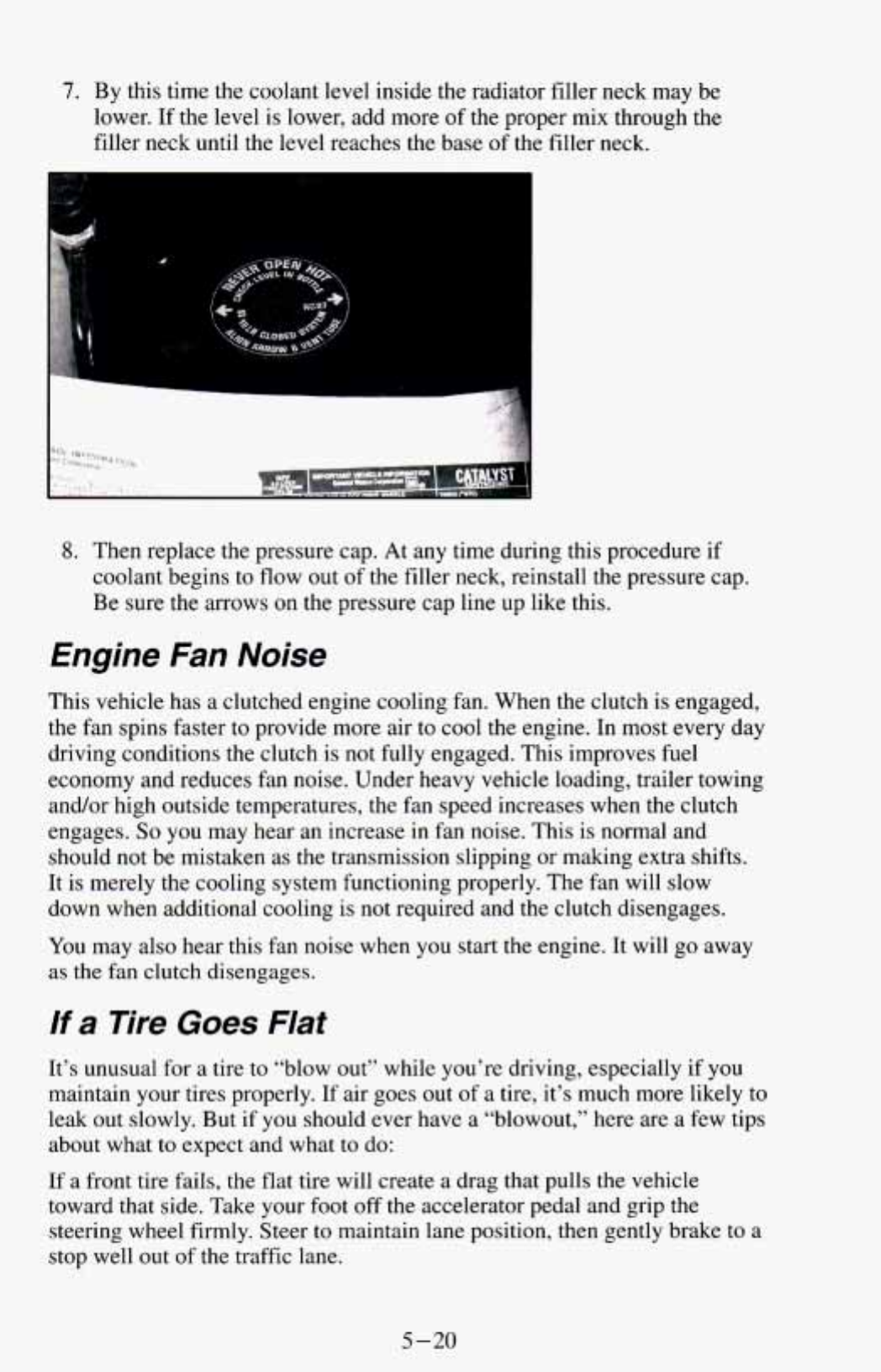
7.
By this time the coolant level inside the radiator filler neck may be
lower.
If
the level
is
lower, add more
of
the proper mix through the
filler neck until the level reaches the base
of
the filler neck.
8.
Then replace the pressure cap. At any time during this procedure if
coolant begins to flow out of the filler neck, reinstall the pressure cap.
Be sure the arrows on the pressure cap line
up
like this.
Engine Fan Noise
This vehicle has
a
clutched engine cooling fan. When the clutch is engaged,
the fan spins faster to provide more air to cool the engine. In most every day
driving conditions the clutch is not fully engaged. This improves fuel
economy and reduces fan noise. Under heavy vehicle loading, trailer towing
and/or high outside temperatures, the fan speed increases when the clutch
engages.
So
you may hear an increase in fan noise. This is normal and
should not be mistaken
as
the transmission slipping
or
making extra
sh
It is merely the cooling system functioning properly. The fan will slow
down when additional cooling is not required and the clutch disengage
.ifts.
S.
You
may also hear this fan noise when you start the engine. It will go away
as the fan clutch disengages.
If
a
Tire
Goes
Flat
It’s unusual for a tire
to
“blow out” while you’re driving, especially if you
maintain your tires properly.
If
air goes out of a tire, it’s much more likely to
leak out slowly. But if you should ever have a “blowout,” here are a few tips
about what
to
expect and what to do:
If
a
front tire fails, the flat tire will create a drag that pulls
the
vehicle
toward that side. Take your foot off the accelerator pedal and grip the
steering wheel firmly. Steer
to
maintain lane position, then gently brake to a
stop well out of the traffic lane.
5-20


















